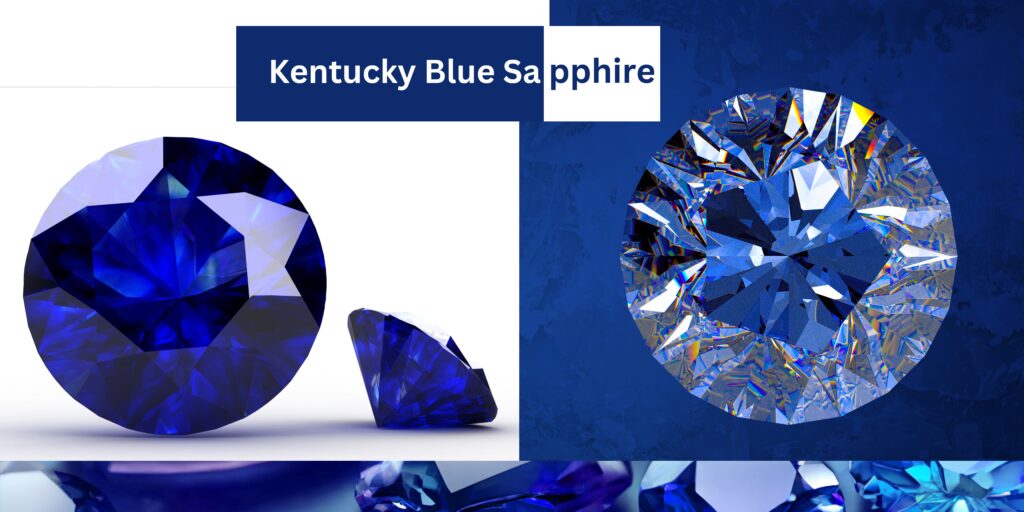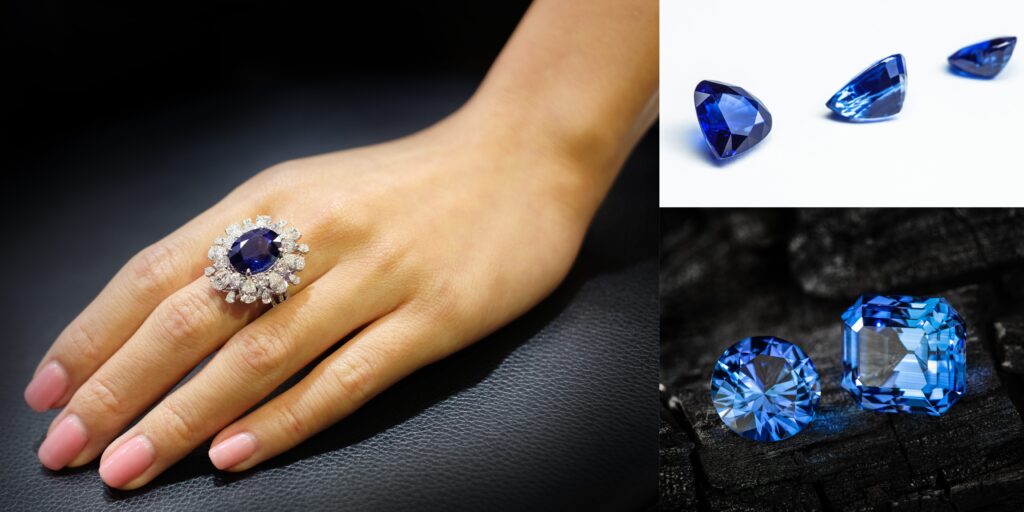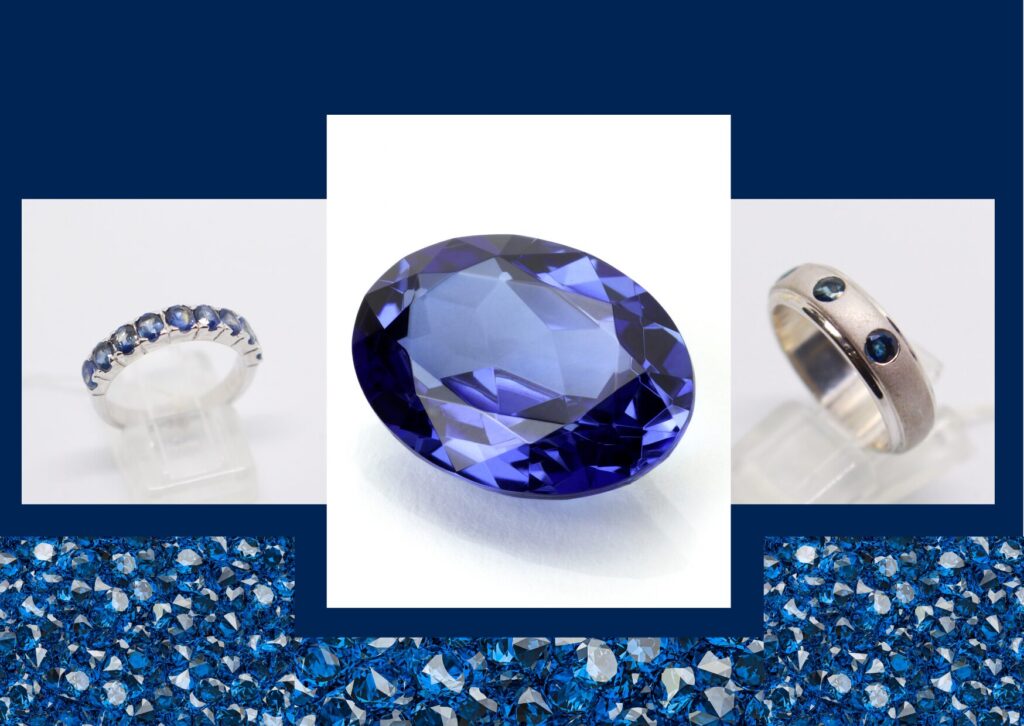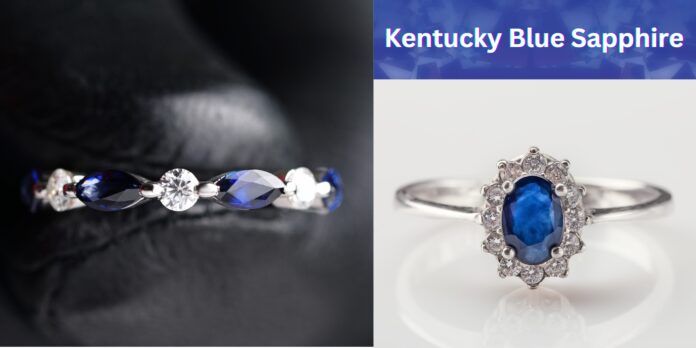Table of Contents
When it comes to rare and precious gemstones, few are as captivating as the Kentucky Blue Sapphire. This magnificent gemstone, famous for its rich blue hue, has long been associated with beauty, elegance, and mystique. Found primarily in the state of Kentucky, USA, it is a variety of sapphire that is prized for its rarity and unique color.
We will delve into the history, formation, characteristics, and uses of the Kentucky Blue Sapphire, exploring why it holds such a special place in the world of gemstones.
Introduction to Kentucky Blue Sapphire
Sapphires, as a whole, are among the most sought-after gemstones in the world. Known for their durability, beauty, and versatility, sapphires come in various colors, ranging from the iconic blue to pink, yellow, green, and even colorless. Among these, the Kentucky Blue Sapphire stands out due to its distinctive hue and geographical origin.
Unlike other types of sapphires, which are commonly found in countries like Sri Lanka, Myanmar, and Thailand, Kentucky Blue Sapphires are found exclusively in the United States, making them an even more special and rare variety. Their deep blue color, which can range from light to dark blue, makes them highly desirable among collectors and jewelry enthusiasts.
The Origins of Kentucky Blue Sapphire
The story of the Kentucky Blue Sapphire begins in the state of Kentucky, specifically in Montgomery County, where these sapphires are primarily found. Kentucky’s rich geological history has led to the formation of a variety of precious minerals, including sapphires. The state’s natural deposits were first discovered in the mid-19th century, though it wasn’t until the early 20th century that sapphires began to be mined on a larger scale.
The geology of Kentucky is unique in that it contains a combination of metamorphic rocks, such as gneiss and schist, which provide an ideal environment for sapphire formation. The combination of heat and pressure over millions of years transformed aluminum-rich minerals into the vibrant blue sapphires that are now highly valued for their beauty and rarity.

How Kentucky Blue Sapphires Are Formed
Sapphires, like all gemstones, are formed deep within the Earth’s crust under extreme heat and pressure. The process begins when minerals, particularly aluminum oxide, are subjected to conditions of high temperature and pressure. When trace amounts of iron and titanium are present, they cause the sapphire to develop its signature blue color. In Kentucky, the geological conditions are just right to produce sapphires with a distinctive, rich blue hue.
The process of sapphire formation can take millions of years, which explains why these gemstones are considered so valuable. When a sapphire is unearthed, it often undergoes additional treatment, such as cutting and polishing, to enhance its natural beauty and bring out its brilliant color.
Characteristics of Kentucky Blue Sapphire
Color
The defining feature of the Kentucky Blue Sapphire is its color. These sapphires exhibit a rich, intense blue that can range from lighter shades to deep, velvety blues. The color is highly desirable because of its vividness and purity. Unlike some other sapphires that may have greenish or purplish undertones, the Kentucky Blue Sapphire is prized for its true blue tone.
The color of a sapphire is one of the key factors in determining its value. The deeper and more vibrant the blue, the more valuable the sapphire is likely to be. For Kentucky Blue Sapphires, the best specimens are those that exhibit a deep, saturated blue without any unwanted secondary hues.
Clarity
Like other high-quality sapphires, Kentucky Blue Sapphires are prized for their clarity. While it is common to find some inclusions or internal imperfections in natural sapphires, the most valuable stones are those that are clear and free of visible flaws. In Kentucky Blue Sapphires, inclusions are generally minimal, although some may exhibit small natural characteristics known as “silk.” These inclusions, when present in moderation, do not significantly affect the sapphire’s overall appeal and may even enhance its uniqueness.
Durability
Sapphires are among the hardest naturally occurring gemstones, second only to diamonds. They rate 9 on the Mohs scale of hardness, which makes them an excellent choice for use in fine jewelry, such as rings, necklaces, and bracelets. Kentucky Blue Sapphires are no exception to this rule, offering both beauty and durability that will last a lifetime.
Because of their hardness, Kentucky Blue Sapphires are resistant to scratching and chipping, making them ideal for everyday wear. Their toughness also ensures that they retain their brilliance over time, even with regular exposure to wear and tear.
Size and Shape
Kentucky Blue Sapphires come in a variety of sizes and shapes. While larger stones are typically more valuable, even smaller sapphires can command a premium price if they exhibit excellent color and clarity. The shape of the sapphire also plays a role in its appeal. Common cuts for Kentucky Blue Sapphires include round, oval, cushion, and emerald shapes, though some may also be cut into unique or custom designs to suit the preferences of the wearer.
Caring for Your Kentucky Blue Sapphire
Cleaning Tips
To maintain the brilliance of your Kentucky blue sapphire, regular cleaning is essential. Use a soft toothbrush, mild soap, and warm water to gently scrub the surface. Steer clear of strong chemicals or rough materials, as they may harm the stone’s surface.
Proper Storage
Store your sapphire jewelry in a soft cloth or a padded jewelry box to prevent scratches. If possible, keep it separate from other gemstones to avoid accidental damage.
Mining and Sourcing Kentucky Blue Sapphires
The mining of Kentucky Blue Sapphires is a specialized process, requiring a combination of geological expertise and skilled labor. The primary source of these sapphires is located in Montgomery County, where small-scale mining operations extract the gems from alluvial deposits.
Alluvial mining, which involves the extraction of gemstones from riverbeds or loose sediment, is the most common method used to find Kentucky Blue Sapphires. Miners use a combination of techniques, including panning and sluicing, to sift through the soil and uncover the valuable stones. Once the sapphires are found, they are carefully cleaned and sorted based on their size, color, and clarity.
Given the rarity of Kentucky Blue Sapphires, they are considered a highly sought-after gemstone. The mining process can be labor-intensive and time-consuming, contributing to the rarity and high value of these stones.
The Spiritual and Symbolic Significance of Kentucky Blue Sapphires

Metaphysical Properties
For centuries, sapphires have been regarded as symbols of wisdom, protection, and divine favor. Kentucky blue sapphires are no exception, often used in meditation and healing practices. Many believe that these gemstones enhance clarity of thought, calm the mind, and boost intuition.
Birthstones and Zodiac Associations
Sapphires are the birthstone for September, making them a meaningful gift for those born in this month. They are also associated with the zodiac signs Virgo, Libra, and Sagittarius. Wearing a Kentucky blue sapphire is thought to bring balance and harmony to one’s life.
Value of Kentucky Blue Sapphire
Several factors determine the value of a Kentucky Blue Sapphire. As with all gemstones, the Four Cs color, clarity, cut, and carat weight are essential considerations when determining the worth of a sapphire.
- Color: The more intense and vivid the blue, the higher the value. Kentucky Blue Sapphires are most prized for their deep, rich blue tones, with stones that exhibit an even color distribution being the most valuable.
- Clarity: Sapphires with minimal inclusions or internal flaws are considered more valuable. A sapphire with exceptional clarity is rare and, therefore, commands a higher price.
- Cut: The way a sapphire is cut can greatly influence its brilliance and overall aesthetic appeal. Well-cut stones that maximize the gem’s natural beauty are more highly valued.
- Carat Weight: Larger sapphires are typically more expensive, as they are rarer. Size alone is not enough to determine the value of color, clarity, and cut must also be considered.
Because of their rarity and the specialized nature of their mining, Kentucky Blue Sapphires often fetch a premium price compared to sapphires from other regions. High-quality stones with deep, vibrant blue colors can easily be valued at several thousand dollars per carat, depending on their characteristics.
Uses of Kentucky Blue Sapphire
Popular Designs
Kentucky blue sapphires are a favorite among jewelry designers for their striking appearance and adaptability. From solitaire rings to elaborate necklaces, these gemstones can elevate any piece of jewelry to the next level of elegance.
Engagement Rings
Blue sapphires have long been associated with loyalty, trust, and wisdom—qualities highly sought after in romantic relationships. Kentucky blue sapphire engagement rings have become a favored choice for those seeking something different from the classic diamond rings, providing a distinctive and heartfelt option.
Modern Trends
In recent years, the demand for sustainable and locally sourced gemstones has skyrocketed. Kentucky blue sapphires fulfill this requirement perfectly, making them a popular choice for eco-conscious consumers seeking ethical jewelry options.
Comparing Kentucky Blue Sapphire to Other Gemstones

Sapphire vs. Diamond
While diamonds are known for their brilliance and timeless appeal, Kentucky blue sapphires stand out for their rich color and unique origin. Sapphires are often more affordable than diamonds, making them an excellent choice for budget-conscious buyers.
Sapphire vs. Tanzanite
Tanzanites, like Kentucky blue sapphires, boast a vibrant blue hue. Tanzanites are less durable and require more care. Kentucky blue sapphires are a better option for everyday wear due to their superior hardness.
The Future of Kentucky Blue Sapphire
As interest in Kentucky Blue Sapphires continues to grow, there is an increasing demand for these rare gemstones. The limited supply and the specialized nature of their mining ensure that they remain a coveted commodity. There are concerns about the sustainability of sapphire mining in Kentucky, and efforts are being made to ensure that the extraction process remains environmentally responsible.
In the coming years, it is likely that Kentucky Blue Sapphires will become even more valuable, particularly as more people recognize their unique appeal. As the world of gemstones continues to evolve, the Kentucky Blue Sapphire is poised to remain one of the most iconic and sought-after varieties of sapphire.
Where to Buy Kentucky Blue Sapphires
Local Retailers
For an authentic shopping experience, consider visiting local jewelers in Kentucky. They often feature hand picked selections of blue sapphires sourced directly from the region.
Online Stores
Numerous online platforms specialize in rare and unique gemstones. Ensure the seller provides certification and a detailed description of the sapphire’s origin, color, and clarity before purchasing.
Conclusion
The Kentucky Blue Sapphire is a truly remarkable gemstone with a rich history, stunning color, and exceptional durability. Whether you are a jewelry enthusiast, a collector, or simply someone who appreciates the natural beauty of gemstones, the Kentucky Blue Sapphire is a gem worth admiring. With its captivating blue hue and rare origin, it is no surprise that this gemstone has earned a place among the most beloved and valuable gems in the world.
FAQS
Q1. What is a Kentucky Blue Sapphire?
A Kentucky Blue Sapphire is a rare and prized variety of sapphire found primarily in Montgomery County, Kentucky. It is known for its vibrant blue color and high-quality characteristics.
Q2. Where are Kentucky Blue Sapphires found?
These sapphires are primarily sourced from Montgomery County, Kentucky, in the United States.
Q3. What makes Kentucky Blue Sapphires unique?
Kentucky Blue Sapphires are unique due to their rich, deep blue color and rarity, as they are only found in Kentucky, unlike other sapphires found worldwide.
Q4. How are Kentucky Blue Sapphires formed?
They are formed deep within the Earth’s crust under extreme heat and pressure, with trace elements like titanium and iron contributing to their signature blue color.
Q5. Are Kentucky Blue Sapphires valuable?
Yes, due to their rarity, stunning color, and quality, Kentucky Blue Sapphires are highly valuable and can command premium prices.
Q6. What are Kentucky Blue Sapphires used for?
They are commonly used in fine jewelry such as engagement rings, necklaces, earrings, and bracelets due to their beauty and durability.
Q7. How durable are Kentucky Blue Sapphires?
Kentucky Blue Sapphires are very durable, with a hardness of 9 on the Mohs scale, making them resistant to scratches and ideal for everyday wear.



Thanks , I’ve just been searching for information about this topic for a while and yours is the best I have found out so far. But, what about the bottom line? Are you certain about the supply?
You’re welcome! 😊 I’m really glad to hear that you’ve been enjoying the blog posts. Thanks for taking the time to read them and share your kind words it truly means a lot! If there’s a specific topic you’d like to see covered next, feel free to let me know.
I like this weblog so much, saved to fav. “To hold a pen is to be at war.” by Francois Marie Arouet Voltaire.
Great site. A lot of useful info here. I¦m sending it to a few friends ans additionally sharing in delicious. And obviously, thank you for your effort!
There is noticeably a bundle to find out about this. I assume you made sure good points in options also.
Hello! I just would like to give a huge thumbs up for the great info you have here on this post. I will be coming back to your blog for more soon.
I¦ve recently started a website, the info you provide on this web site has helped me tremendously. Thank you for all of your time & work.
Thanks If you need a content written, feel free to get in touch with me.
Wonderful post but I was wanting to know if you could write a litte more on this topic? I’d be very thankful if you could elaborate a little bit more. Bless you!
Sure, Thanks
Hey very nice blog!! Guy .. Beautiful .. Superb .. I’ll bookmark your web site and take the feeds additionallyKI’m glad to search out so many useful information here in the post, we want develop more strategies in this regard, thank you for sharing. . . . . .
Saved as a favorite, I really like your blog!
Your place is valueble for me. Thanks!…
Pretty portion of content. I just stumbled upon your blog and in accession capital to assert that I acquire in fact enjoyed account your weblog posts. Anyway I’ll be subscribing in your feeds and even I achievement you get right of entry to consistently rapidly.
I?¦ve learn a few good stuff here. Certainly price bookmarking for revisiting. I wonder how much attempt you set to make the sort of great informative website.
I always was concerned in this subject and still am, thankyou for putting up.
Very clean web site, appreciate it for this post.
Very interesting points you have mentioned, regards for posting.
I am happy that I detected this weblog, exactly the right information that I was searching for! .